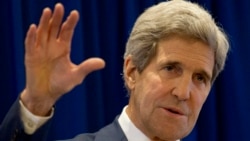In 1984, the year U.S.-ASEAN Business Council was founded, the annual Gross Domestic Product, or GDP, of the 10 ASEAN countries was about $220 billion. Today, that GDP has grown more than 10 times to $2.4 trillion.
Secretary of State John Kerry, speaking at the U.S.-ASEAN Business Council’s 30th Anniversary celebration in Washington, D.C. said, “The true measure of our success is . . . not whether [our economies] continue to grow, but how they grow. ...U.S. trade and investment has the potential to create shared prosperity . . . that’s sustainable and environmentally friendly, wealth that lifts up communities and creates opportunity, and . . . jobs for the United States and for all of our partner nations.”
U.S. companies export roughly $100 million in products to ASEAN nations each year. American businesses have been the number one investor in ASEAN economies for decades, and U.S. investments in ASEAN are larger than China, Japan, and South Korea combined.
“What we need to focus on today is how [to] make sure this growth continues,” Secretary Kerry said, citing the Trans-Pacific Partnership a trade agreement that would connect more than 40 percent of the global GDP and one-third of global trade and raise standards consistent with our shared economic interests and values.
“We need to make sure that the leaders of the future are getting the training and the education they need,” he said. “About 65 percent . . . of the population of ASEAN region is under the age of 35, and these young people are innovative, creative, and they’re eager to contribute their ideas, energy, to improve not only their own lives but the lives of others in their communities . . . We are investing in programs like . . . the Young Southeast Asian Leaders Initiative, [which] connects youth from all 10 ASEAN countries digitally, in regional gatherings and fellowships in the U.S. to address the challenges faced across the region.
“With so much focus on the challenges that are confronting us today. . ., it can be easy to miss . . . that there are also unprecedented opportunities,” Kerry said. “And few regions in the world are as ripe for those opportunities as Southeast Asia.”

















